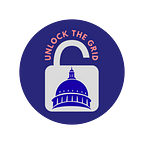The Politics of Education: Which Practice is Best?
Headline: In our modern world of ever-advancing technology, recent generations seem to be less and less prepared to enter the American workforce as productive members of society — even as more and more graduate with degrees in higher education. Unlock the Grid explores the causes and the solutions proposed from both sides of the political aisle.
Most Americans, regardless of their politics, can agree that there are some significant flaws in today’s public school system — and they have the numbers to back it up. Among the most highly developed countries globally — that is, the 35 members of the OECD (Organization for Economic Cooperation and Development) — the United States laughably ranked 30th in mathematics scores and 19th in science, as 2015 statistics report. It is an even bigger head-scratcher when we learn that the United States is also ranked fifth in the world for spending on a per-student basis. What is the cause of our failing public education system, and how does each political party propose to alleviate these issues? From the former Trump-appointed Secretary of Education, Betsy DeVos, to the grassroots-beginnings Biden administration Secretary Miguel Cardona, Unlock the Grid will analyze the vastly different approaches we see coming from both sides.
At the core of the Democratic Party’s educational policy platform is the strive to achieve equity. The primary focus of their rhetoric has a focus on underprivileged students and underserved communities of color, as well as on providing more accessibility for the physically and mentally disabled and making college more accessible to all students by expanding federal loan assistance.
Due to a disproportionate amount of spending in predominantly white school districts (citing $23 billion more), Democrats aim to close the gap by tripling funding for Title I schools to distribute more money to students in low-income neighborhoods. Funding should also be funneled into the expansion of universal free school meal programs, before- and after-school programs, and other services that solidify the role of schools as the vibrant hub of these communities.
Republicans, generally in favor of limited government and lower taxes, argue that American schools are already well-funded: “The United States spends an average of more than $12,000 per pupil per year in public schools, for a total of more than $620 billion. That represents more than 4 percent of GDP devoted to K-12 education in 2011–2012. Of that amount, federal spending amounted to more than $57 billion. If money were the solution, our schools would be problem-free.” For those on the other side, it is worth noting, however, that there is a failure here to make the distinction between underfunded school districts as compared to those in wealthier neighborhoods.
The central premise of the Republican policy platform is school choice. Former Secretary of Education Betsy DeVos spent her four years in office championing this idea and advocating for funds to be diverted away from federal programs to private school vouchers that would allow students themselves to decide which school best fit their needs, rather than be forced to attend one based on ZIP code. The core tenet is the idea that each student is unique and has different learning needs. Consequently, families should have the ability and the “power of the purse” to decide what environment they believe their child will thrive. Democrats oppose school vouchers because they argue that every student taken out of public school strips funding from the overall system, which underserved communities rely on the most. DeVos has stated that she believes in catering to the needs of students first, not the system, and believes that school choice can put underprivileged students on the same playing field as those from wealthier backgrounds, who already have the opportunity to leave the public school system and seek a school that best meets their needs.
Student loans are another central talking point between the two parties. Collectively, college graduates owe nearly $1.6 trillion, and the average student loan debt has topped $37,500 as of 2020. As an alternative, Republicans have chosen to advocate that education at a traditional university is not the only path to success; they support programs such as technical institutions, online universities, and work-based learning to prepare students for the workforce. When it comes to student loans, those on the right do not believe that the government should be originating such loans — private sector financing of college costs is encouraged. The Democratic platform wants instead to make public colleges tuition-free for families earning under $125,000 per year — this includes 80% of American people. Democrats encourage more federal support for those who choose to pursue higher education, wanting to double the maximum Pell Grant award and proposing to pause monthly billing for those earning less than $25,000 per year to stop their debt from accumulating.
The recently appointed Secretary of Education Miguel Cardona has so far been concerned with the push to reopen public schools across the nation after over a year of lockdowns and hybrid schedules for most. As a former elementary school teacher and principal, his grassroots approach involves visiting schools and observing how teachers and students work best. He supports greater public school funding and is working with educators to guarantee high-quality education to every American student and more opportunities to have their voice heard.
Horace Mann, one of the first promoters of public education, famously called education “the great equalizer.” It is hard to say whether we see his vision come to life, especially during the COVID-19 crisis as private schools remain open alongside shuttered-up public schools, and low-income students are less likely to be returning to school than their wealthier peers. Ultimately, the way we see this issue comes down to how we view equity: does it mean using government funding to help struggling schools and the children who attend, or does it mean investing in the students themselves to let them decide where their needs are best met?
